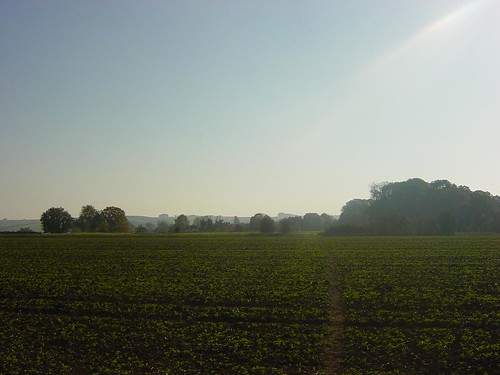Archaeologists began working on one of Britain’s most mysterious ancient landmarks this Monday, as they aim to unravel its many hidden secrets (UPDATE: Click here to read about some of the finds). And while Marden Henge in Wiltshire may be almost unknown alongside its neighbour at Stonehenge, it is at least ten times bigger, making it one of Britain’s biggest stone circles.
Unlike Stonehenge, and nearby Avebury, Marden contains no standing stones. Yet the six-week project by English Heritage, fresh from their visitor centre disappointment, will probe the site for clues as to whether it once did, and what it was used for after its construction around 2,400 BC. The henge, close to the source of the River Avon, could prove this year’s biggest Stonehenge-related discovery after last year’s unveiling of Bluestonehenge, a smaller circle also by the river.
The henge has plenty of features that are getting experts excited about the dig. In the centre is a huge mound, similar to nearby Silbury Hill, which collapsed in 1806 and was completely flattened by 1817. The team hopes to date material in its centre. A large circular feature, surrounded by a bank and gullies, will also be scoured as the mystery of Marden becomes clearer.
Geophysical and topographical studies will accompany the archaeology, as the team aims to understand and preserve what English Heritage archaeologist Jim Leary thinks is an ancient sleeping giant. “Marden Henge deserves to be understood more partly because of its size, but also due to its proximity to the more famous stone circles at Avebury and Stonehenge,” he says.
“The relationship between the latter two sites – chronology of their construction, whether it is built by the same people, how they were used, etc – is of immense interest” adds Leary.
“How Marden relates to them is another layer of interest which we want to study. We are potentially looking at a much more intricate system of Neolithic ritual sites in this part of the world than we previously thought.”
Wiltshire is one of the world’s richest Neolithic regions, and is littered with mysterious monuments such as Woodhenge, West Kennet Barrow and Durrington Walls, an ancient settlement you can explore now at Stonehenge Virtual. Leary hopes that the work at Marden can be as groundbreaking as Durrington’s discovery was. “The study of prehistory is entering a very exciting phase with lots of fascinating research and dating techniques emerging,” he says.
“The stunning discovery of Neolithic houses at Durrington Walls near Stonehenge a few years’ ago, for example, has really turned things on its head,” adds Leary. “We certainly hope that this excavation will bring more pieces of the puzzle to light.” Perhaps people will be visiting Marden, rather than Stonehenge, for the summer solstice in years to come.
See the sun rise over Stonehenge from your own home with Stonehenge Virtual. Meet Neolithic builders, touch the stones and even try putting a trithlon up yourself.

